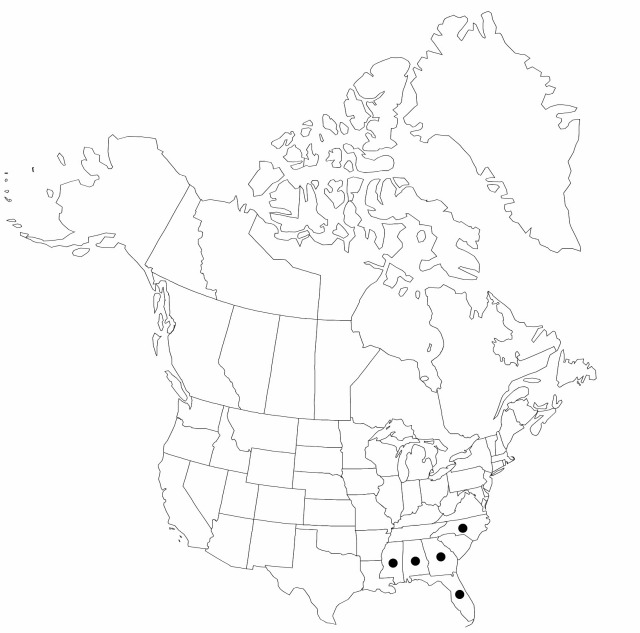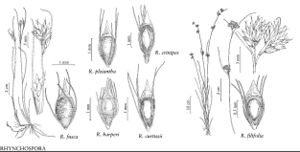Rhynchospora crinipes
Rhodora 46: 173, plate 823, figs. 2A, B. 1944.
Plants perennial, solitary or cespitose, 60–100 cm; rhizomes sometimes present, stoloniferous. Culms lax, leafy, mostly excurved, slender. Leaves shorter than culm; blades ascending, narrowly linear, proximally flat, 2–4 (–5) mm wide, apex trigonous, shortsubulate, tapering. Inflorescences: spikelet clusters 3–7 (–10), dense, all but most distal widely spaced, broadly turbinate to ovate or hemispheric. Spikelets light-redbrown, lanciform, 5 mm, apex acuminate; fertile scales lanceolate, 4–4.5 mm, apex acuminate, midrib excurrent as awn. Flowers: bristles 6, reaching past tubercle base, usually to or slightly past its tip, antrorsely barbellate. Fruits 2 (–4) per spikelet; stipe and receptacle curled-setose, (0.5–) 0.6–08 (–1) mm; body glossy, brown with pale center, narrowly obovoidlenticular, 1.2–1.5 mm, surfaces minutely striate, sometimes transversely minutely rugulose with wavy rows of dark minute dots; margins narrow, strong, flowing to tubercle; tubercle narrowly triangular, slightly concavesided, flattened, setulose-ciliate, 0.7–1.1 mm.
Phenology: Fruiting summer–fall.
Habitat: Sands, gravels, and peat muck of banks and bars of blackwater streams
Elevation: 0–100 m
Distribution

Ala., Fla., Ga., Miss., N.C.
Discussion
Clumps of Rhynchospora crinipes are often toppled by floodwaters, these clumps then can root from lower nodes. When clusters of spikelets have ripened fruit, these will germinate while still attached to the parent culm.
Selected References
None.
Lower Taxa
"shortened" is not a number."wider" is not a number.
